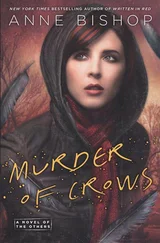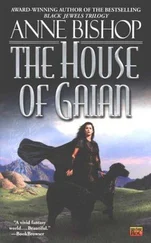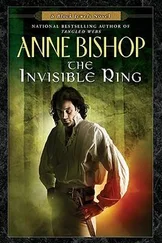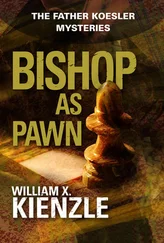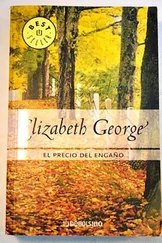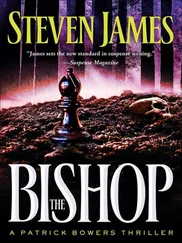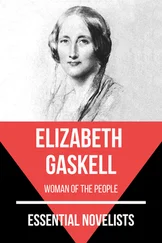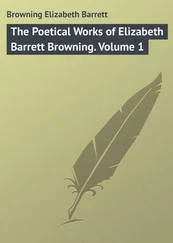But after my grandmother had turned out the lamp, Gwendolyn began to talk to me again. We told each other which colors we liked best together, and I remember the feeling of profound originality I experienced when I insisted, although it had just occurred to me, that I had always liked black and brown together best. I saw them floating in little patches of velvet, like the crazy quilt, or smooth little rectangles of enamel, like the paint-sample cards I was always begging for at the general store.
* * *
Two days after this visit, Gwendolyn did die. One of her brothers came in to tell my grandmother — and I was there in the kitchen when he told her — with more of the elderly-man headshakes and some sad and ancient phrases. My grandmother wept and wiped her eyes with her apron, answering him with phrases equally sad and ancient. The funeral was to be two days later, but I was not going to be allowed to go.
My grandfather went, but not my grandmother. I wasn’t even supposed to know what was taking place, but since the Presbyterian church was right across the village green from our house, and I could hear the buggies driving up over the gravel, and then the bell beginning to ring, I knew quite well, and my heart began to pound again, apparently as loudly as the bell was ringing. I was sent out to play in the yard at the far side of the house, away from the church. But through one of the kitchen windows — the kitchen was an ell that had windows on both sides — I could see my curious grandmother drawing up her rocking chair, as she did every Sunday morning, just behind a window on the other side of the ell, to watch the Presbyterians going to church. This was the unacknowledged practice of the Baptists who lived within sight of the church, and later, when they met at their own afternoon service, they would innocently say to each other things like “They had a good turnout this morning” and “Is Mrs. Peppard still laid up? I missed her this morning.”
But today it was quite different, and when I peeked in at my grandmother at one side of the ell, she was crying and crying between her own peeks at the mourners out the other side. She had a handkerchief already very wet, and was rocking gently.
It was too much for me. I sneaked back into the house by the side door and into the shut-up parlor, where I could look across at the church, too. There were long lace curtains at the window and the foxgloves and bees were just outside, but I had a perfectly clear, although lace-patterned, view of everything. The church was quite large — a Gothic structure made of white clapboards, with non-flying buttresses, and a tall wooden steeple — and I was as familiar with it as I was with my grandmother. I used to play hide-and-seek among the buttresses with my friends. The buggy sheds, now all filled, were at the back, and around the large grass plot were white wooden pillars with double chains slung slackly between them, on which my cousin Billy, who lived right next door to the church, and I liked to clamber and swing.
At last, everyone seemed to have gone inside, and an inner door shut. No, two men in black stood talking together in the open outside doorway. The bell suddenly stopped ringing and the two men vanished, and I was afraid of being in the parlor alone, but couldn’t leave now. Hours seemed to go by. There was some singing, but I didn’t recognize the hymns, either because I was too nervous or because, as they sometimes did, the Presbyterians sang hymns unfamiliar to me.
I had seen many funerals like this before, of course, and I loved to go with my grandfather when he went to the graveyard with a scythe and a sickle to cut the grass on our family’s graves. The graveyard belonging to the village was surely one of the prettiest in the world. It was on the bank of the river, two miles below us, but where the bank was high. It lay small and green and white, with its firs and cedars and gravestones balancing against the dreaming lavender-red Bay of Fundy. The headstones were mostly rather thin, coarse white marble slabs, frequently leaning slightly, but there was a scattering of small urns and obelisks and broken columns. A few plots were lightly chained in, like the Presbyterian church, or fenced in with wood or iron, like little gardens, and wild rosebushes grew in the grass. Blueberries grew there, too, but I didn’t eat them, because I felt I “never knew,” as people said, but once when I went there, my grandmother had given me a teacup without a handle and requested me to bring her back some teaberries, which “grew good” on the graves, and I had.
And so I used to play while my grandfather, wearing a straw hat, scythed away, and talked to me haphazardly about the people lying there. I was, of course, particularly interested in the children’s graves, their names, what ages they had died at — whether they were older than I or younger. The favorite memorial for small children was a low rectangle of the same coarse white marble as the larger stones, but with a little lamb recumbent on top. I adored these lambs, and counted them and caressed them and sat on them. Some were almost covered by dry, bright-gold lichen, some with green and gold and gray mixed together, some were almost lost among the long grass and roses and blueberries and teaberries.
But now, suddenly, as I watched through the window, something happened at the church across the way. Something that could not possibly have happened, so that I must, in reality, have seen something like it and imagined the rest; or my concentration on the one thing was so intense that I could see nothing else.
The two men in black appeared again, carrying Gwendolyn’s small white coffin between them. Then — this was the impossibility — they put it down just outside the church door, one end on the grass and the other lifted up a little, to lean at a slight angle against the wall. Then they disappeared inside again. For a minute, I stared straight through my lace curtain at Gwendolyn’s coffin, with Gwendolyn shut invisibly inside it forever, there, completely alone on the grass by the church door.
Then I ran howling to the back door, out among the startled white hens, with my grandmother, still weeping, after me.
* * *
If I care to, I can bring back the exact sensation of that moment today, but then, it is also one of those that from time to time are terrifyingly thrust upon us. I was familiar with it and recognized it; I had already experienced it once, shortly before the bronchitis attack of the previous winter. One evening, we were all sitting around the table with the lamp hanging above it; my grandfather was dozing in the Morris chair, my grandmother was crocheting, and my Aunt Mary, who had not yet gone away to Boston, was reading Maclean’s Magazine. I was drawing pictures when suddenly I remembered something, a present that had been given to me months before and that I had forgotten all about. It was a strawberry basket half filled with new marbles — clay ones, in the usual mottled shades of red, brown, purple, and green. However, in among them were several of a sort I had never seen before: fine, unglazed, cream-colored clay, with purple and pink lines around them. One or two of the larger ones of this sort even had little sprigs of flowers on them. But the most beautiful of all, I thought, was a really big one, probably an inch and a half in diameter, of a roughly shiny glazed pink, like crockery. It moved me almost to tears to look at it; it “went right through me.”
Anyway, I started thinking about these marbles — wondering where they had been all this time, where I had put them, if they had got lost — until at last it became unbearable and I had to go and find them. I went out to the kitchen in the dark and groped around on the floor of a cupboard where I kept some of my belongings. I felt the edges of riffled old books and sharp mechanical toys, and then, at the back, I did feel the strawberry basket. I dragged it out and carried it into the sitting room.
Читать дальше

